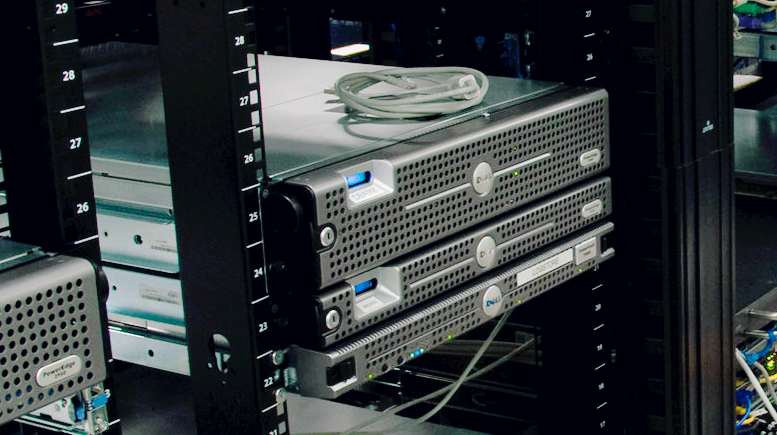Cloud infrastructure services have gained momentum in 2010 and ever since the Cloud IaaS providers led by AWS have become mainstream when it comes to hosting public or private IT infrastructure. In an IT industry, where decisions are made by web developers, the big corporate – clouds AWS, Azure, and Google – have managed to create automation platforms that developers like. Web developers hate to deal with system administration. They love to deploy code and create software applications without being concerned about resource optimization. In a software-as-a-service driven digital economy, the business owners have to choose between: a) demanding web developers to create and run optimized software programs (SaaS) and platforms (PaaS) that use less computing resources, or b) to accept that their cloud hosting service bills on AWS, Azure, Google, and other major clouds will increase gradually over time due to the increased resource usage, mostly CPU and RAM.
The lesson we have learned through the years is that business owners end up, overpaying to web developers to get optimized software and IT environment and risk significant production delays. For this reason, most companies settle for whatever software product they get without demanding web developers to spend time on resource optimization.
This presents a huge advantage to the big corporate cloud service providers. They have the purchasing capacity to buy cheap hardware. They are also very good at automating the process of provisioning and delivering cloud infrastructure services. The combination of cheap computing resources and advanced automation allows them to claim that they do “serverless computing”. Amazon AWS describes “serverless computing” like this:
“Serverless is a way to describe the services, practices, and strategies that enable you to build more agile applications so you can innovate and respond to change faster. With serverless computing, infrastructure management tasks like capacity provisioning and patching are handled by AWS, so you can focus on only writing code that serves your customers.”
AWS and other major clouds saw a huge advantage in creating an IT infrastructure service models that work for developers.
Developers are not concerned with the high resource use of their software produces and do not like spending time on optimizing them. The big corporate clouds like resource-demanding software environments, because they allow them to charge more for processing time, memory, storage, and specifically data transfer. It is a win-win situation for web developers and cloud providers. The only ones who lose are the business owners who overspend on cloud services.
The business owners who buy Cloud infrastructure from the major clouds spend 30 – 150 percent more on cloud hosting, compared to the same services delivered by Cloud hosting providers, who charge fixed monthly service fees.
How Colocation helps SMBs to lower their Cloud service bills?
The “serverless computing” offered by the major clouds leads to “serverless apps”. Both terms are phony. There are no “serverless computing” or “serverless apps” for the simple reasons that software programs must work on servers. Still, we have 6 million results in Google for “serverless apps” and there is also a definition that says:
“Serverless is a cloud-native development model that allows developers to build and run applications without having to manage servers. There are still servers in serverless, but they are abstracted away from app development.”
It is very likely the SMBs to be locked to the major cloud providers forever!? Once moving their IT infrastructure to the Cloud, most of them might not be able to move out from the major clouds and because software development industry likes the big corporate clouds. However, there is one thing that SMBs can certainly do to decrease their monthly cost for technology infrastructure. It is to buy hardware themselves and colocate serves with any colocation hosting provider, rather than using AWS, Azure, Google and other major clouds for backups and disaster recovery (DR) services. Here are some reasons why Colocation services work much better for data backup and disaster recovery.
Colocation means that the owner of the servers owns their data!
The data cannot be touched or accessed by any one in and Colocated Private server. The colocation service can be configured with a Private Network. Therefore the colocated server will be invisible for the general public and the outside word.
Colocation services are usually very affordable
In fact, they are the most inexpensive form of IT infrastructure especially if we calculate the amount of resources a colocated server might have. Any business can create a Pivate Cloud on a colocated server virtualized with ProxMox VM, or VMware ESXi. There would be no software licenses and the company would pay a monthly service fee of $50 – $150 per month depending on the data center location and provider’s network. Those who need to use Windows server or Hyper-V isolated containers would simply use leased Microsoft Windows Server license on monthly basis.
Colocation Means Fixed Data Transfer costs
The cloud service providers usually charge their clients for used dat transfer. Colocation services providers bill their clients both per data transfer in used terabytes and per bandwidth in megabits per second (Mbit/s or Mbps). What is the difference between “Data Transfer” and “Bandwidth”?
Bandwidth is the maximum amount of data transmitted over an internet connection in a given amount of time.
Data Transfer is the total amount of data transferred during a given time frame, for example 1 month.
Every server colocation service plan comes with certain amount of bandwidth quota. Why does it matter? Because if you have “100 Mbps bandwidth” per month included in the colocation service, then you will be able to transmit 32.4 TB data transfer, which enough for most of SMBs who do not deal with the transfer of large files. Unlike the colocation providers, the big Cloud service providers do not charge their clients for bandwidth. They bill in gigabytes (GB) data transfer transmitted. This usually results in hundreds or even thousand of dollars paid for data transfer.
When you do data backups and create a disaster recovery colocation plan for your company, it is all about storage and data transfer. Both are expensive on the cloud. When your company purchases a server and colocates it with and data center service provider, you will avoid paying for storage and data transfer. Once you create a customer colocation service plan, you will have enough Internet bandwidth to push as many terabytes (TB) of data transfer, as you need! And you will be paying a monthly flat fee for backups and disaster recovery.
So, instead of using AWS or the major Clouds for data backups, simply go with any colocation services provider. This would allow you to create a custom it environment at lowest possible month cost, will save you thousand of dollars per year and storage, data transfer and infrastructure technical support.


